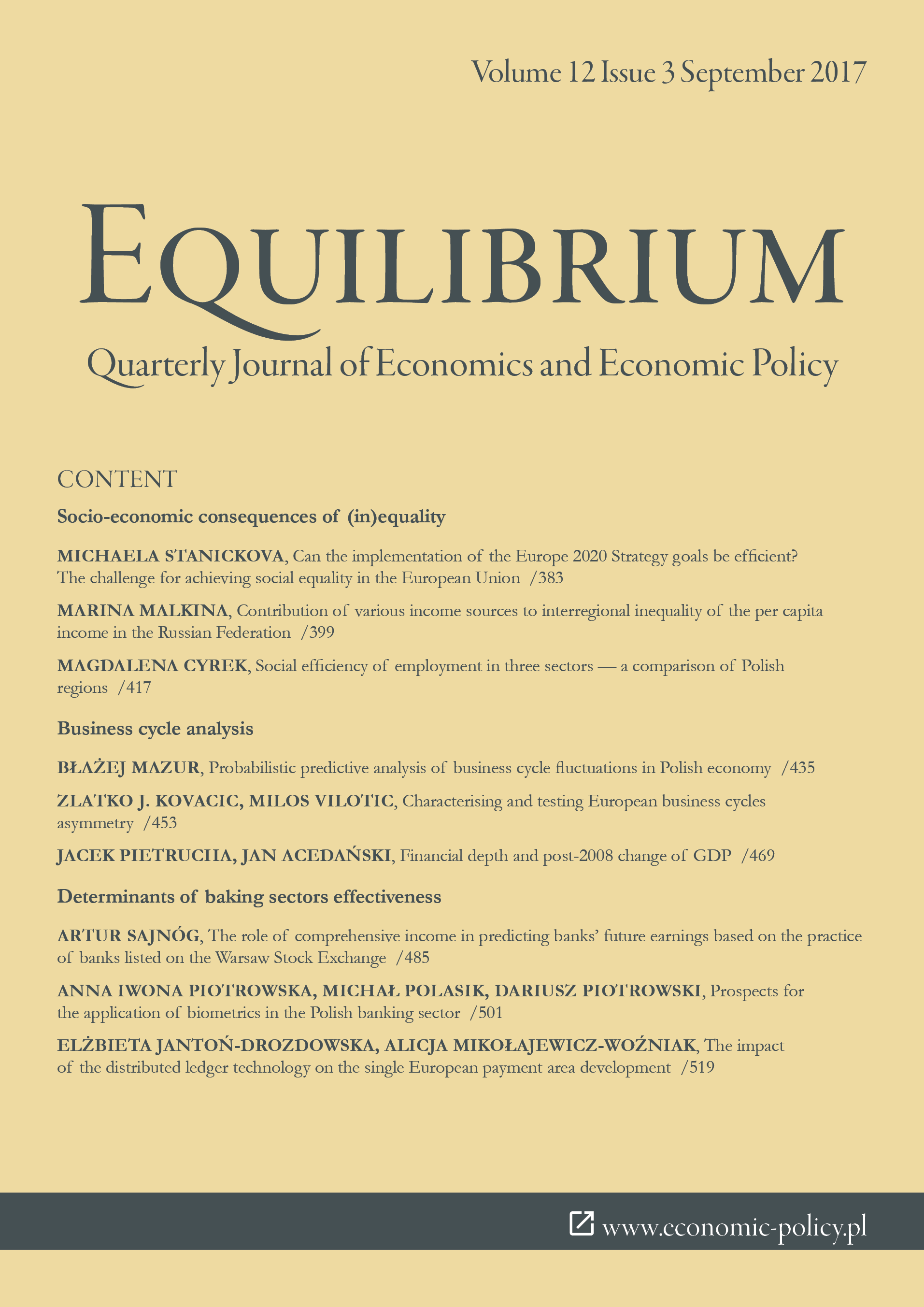Characterizing and testing European business cycles asymmetry
Characterizing and testing European business cycles asymmetry
Author(s): Zlatko J. Kovačić, Miloš VilotićSubject(s): Geography, Regional studies, Business Economy / Management, Economic policy, Methodology and research technology, Transformation Period (1990 - 2010), Present Times (2010 - today)
Published by: Instytut Badań Gospodarczych
Keywords: business cycle; asymmetry; Mills test; Mira test; Sichel test;
Summary/Abstract: One of business cycles stylized facts is that contractions are shorter than expansions, but less persistent, more volatile, and therefore asymmetric. Investigating existence and type of business cycles asymmetry is important for analysis of economic policy and statistical modelling. Economic implication of business cycles asymmetry is that economic policy should be different in a period of contractions than in one of expansion. Statistical implication is that linear models of business cycles cannot capture this stylized fact. Purpose of the article: The article has two objectives: extend the literature on the business cycles asymmetry by testing data from 36 European countries including countries never been analysed before and test robustness of the results to extraction methods and asymmetry tests used. Methods: Quarterly GDP series from Eurostat database covering period 2000q1–2016q3 were used with two exceptions. In the case of Bosnia and Herzegovina and Montenegro quarterly industrial productions indexes were used. Series were prepared by removing seasonal component using X13-ARIMA procedure. To assess robustness of asymmetry tests results to alternative methods of detrending business cycles were extracted using two filters: Corbae-Ouliaris ideal band filter and double Hodrick-Prescott filter. For testing the deepness and steepness asymmetry of the business cycles three tests were used: Mills, Mira and Sichel tests. Findings & Value added: Weaker evidence of deepness asymmetry was found in Cyprus, Montenegro and Turkey cycles, where all three tests statistics for both filters have a negative sign. However, only for one of the tests in each country the result was statistically significant. For two other countries, Germany and Sweden, four out of six tests indicated deepness asymmetry, but only one of these tests results was statistically significant. Most of the cycles show steepness asymmetry, with the exception of Ireland business cycles, and to a certain extent cycles of Poland, Malta, Montenegro and Spain.
Journal: Equilibrium. Quarterly Journal of Economics and Economic Policy
- Issue Year: 12/2017
- Issue No: 3
- Page Range: 453-468
- Page Count: 16
- Language: English

